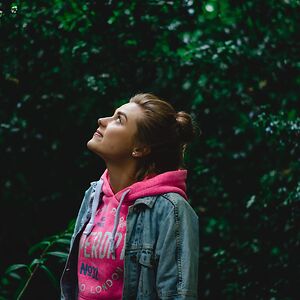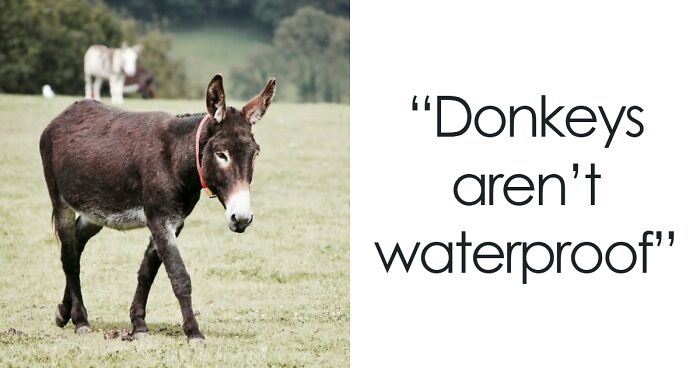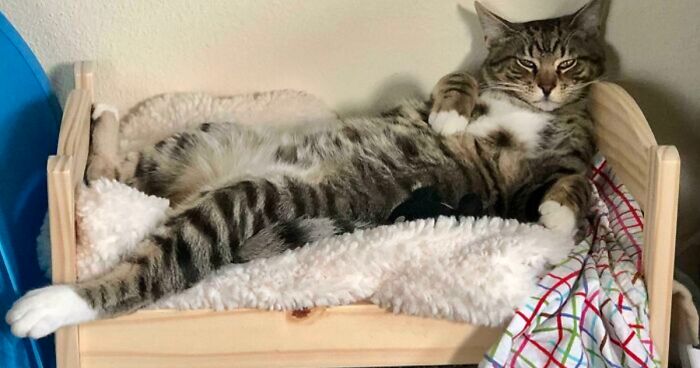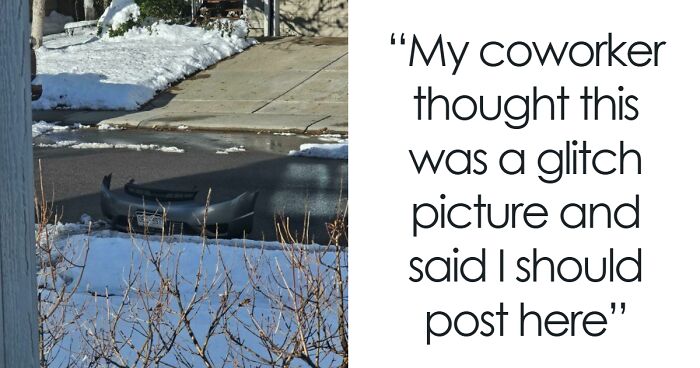
16Kviews
Here Are 15 Breathtaking Entries From The 2024 Wildlife Photographer Of The Year Awards
InterviewWe’re excited to announce that the final of the 2024 Wildlife Photographer of the Year competition, organized by the Natural History Museum, is fast approaching. The ceremony, where the winners will be revealed, is set for October 8.
This year, the competition attracted photographers of all ages and skill levels from 117 countries, with an impressive 59,228 entries submitted. The museum has shared a list of 15 Highly Commended images, which we’re thrilled to share with you today.
If you’re interested in seeing all the stunning photographs live, the exhibition will be open to the public from October 11, 2024, through June 29, 2025, in the Natural History Museum in London.
Scroll down to see the most talked-about pictures competing for the title of the best Wildlife Photographer of the Year and to read our interview with the author of one of our favorite shots from this list.
More info: nhm.ac.uk | Facebook | Instagram | youtube.com
This post may include affiliate links.
Deadly Bite By Ian Ford
Ian Ford documents the moment a jaguar delivers a fatal bite to a caiman in the Pantanal.
A call over the radio alerted Ian that a jaguar had been spotted prowling the banks of a São Lourenço River tributary. Kneeling in the boat, he was perfectly placed when the cat delivered the skull-crushing bite to the unsuspecting Yacare caiman.
And the cat is staring down the photographer as he kills. That would shake me up to my core.
Bored Panda reached out to Ian Ford, the photographer behind the captivating image of a jaguar delivering a deadly bite to a caiman’s skull. This dramatic photograph caught our attention, making us eager to learn more about it from the photographer himself.
We were especially curious about how Ford would describe the moment just before the jaguar struck. The photographer kindly shared with us: “We had been following the female jaguar as she hunted along the edge of the river. She had climbed onto the riverbank and was moving slowly in and out of the dense forest, so we kept losing sight of her. Suddenly, she burst from the bank and launched herself at the unsuspecting caiman. I think we were almost as shocked as the caiman!”
As Clear As Crystal By Jason Gulley
Jason Gulley gazes through clear water at a manatee and a calf adrift among the eelgrass. Jason has photographed many manatee mother-and-calf pairs. The expression on this calf’s face and the bubbles trailing from its flippers, combined with the hopeful backstory, have made it one of Jason’s favourite images. Here in the Crystal River, an algal bloom caused by agricultural runoff led to a decline in the eelgrass beds that the manatees eat. The local community acted, restoring the habitat and improving water quality, resulting in more manatees than ever being recorded in the winter of 2022/2023.
Moonlight Hunter By Xingchao Zhu
Xingchao Zhu comes face to face with a Pallas’s cat as the moon sets.
Xingchao tracked a group of Pallas’s cats on the freezing plateau of Inner Mongolia for several days during the Chinese New Year in February 2023. Shortly before dawn, Xingchao managed to make eye contact with this cat, just as it had caught a small bird.
The thick winter coats of Pallas’s cats help them survive at altitudes up to 5,000 metres (16,400 feet). They avoid larger predators by stealth, and it’s thought that their low, rounded ears allow them to peer over obstacles while remaining hidden.
When asked about unexpected interactions or challenges the photographer experienced with the wildlife during the shoot, Ian responded: “Jaguars are elusive creatures and blend extremely well with their habitat, so patience is crucial. The biggest challenge was the shoot itself. I was in a small, narrow boat on a fast-flowing river moving in the opposite direction to the jaguar. We had to constantly reposition the boat as she progressed along the river. On top of that, there were about a dozen other boats with photographers, all vying for the best position. The uncertainty of whether and when she would strike added to the tension. I positioned myself as low in the hull as possible, camera at the ready, waiting for the moment.”
Twist And Jump By Manuel Grandío
Jose Manuel Grandío braves below-zero temperatures to witness a stoat jumping high into the air above the snow.
Winter is Jose's favourite season for photography. When he spotted this stoat jumping mid-air on the last day of his trip, he saw this performance as an 'expression of exuberance' as the small mammal hurled itself about in a fresh fall of snow. Scientists refer to this behaviour as dancing, although opinions are divided about what motivates it, from an attempt to confuse prey through to a parasitic infection. Stoats are usually active at night and prey on small mammals and birds.
In The Spotlight By Shreyovi Mehta
Shreyovi Mehta finds two Indian peafowl ‘looking perfect for a picture’.
Shreyovi was walking in the forest with her parents when she spotted this scene. She ran back to her dad, who was carrying the cameras, then got down on the ground to take her photograph from a low angle.
Renowned for its birdlife, Keoladeo attracts large numbers of water birds in winter. Peafowl are year-round residents that roost in large trees. They rest in the shade during the day and are more active in open areas at dawn and dusk.
Many photographers dream of capturing their ‘bucket shot,’ and when they finally see it on their camera’s preview screen, it must bring a rush of excitement and accomplishment. We were curious if that was the case for Ford as well. Here’s what we learned: “My first thought was, ‘Did I get the shot?’—everything happened so quickly. As I scrolled through the images on my camera, I was thrilled to see that not only were they sharp, but I had also captured a few frames of the jaguar looking directly at the lens. I knew right away that I had some truly special shots, and I was absolutely delighted.”
Leaving The Nest By Sasha Jumanca
Sasha Jumanca finds two tawny owlets curiously watching people walking by.
Sasha had been watching these tawny owlets for several days in a park near his home. He had seen tawny owls in the neighbourhood before but was surprised to discover these so close to the heart of the city.
Owlets leave the nest before they can fly, in a phase known as 'branching'. They will jump, flutter and climb around branches of nearby trees for several weeks while begging for food from their parents, before they eventually fledge and fly away.
Strength In Numbers By Theo Bosboom
Theo Bosboom shows how mussels bind together to avoid being washed away from the shoreline.
Theo likes to take images of species that aren’t usually considered beautiful or important, to highlight their unappreciated significance. He took this image from above with a probe lens – a long, thin, macro wide-angle lens.
Mussels play an important role in creating dynamic ecosystems for other marine invertebrates such as crustaceans, worms and even small fish. They improve the water quality by filter-feeding, extracting plankton as well as bacteria and toxins, which prevents them from building up to dangerous levels.
Finally, we asked Ian how ‘Deadly Bite’ fits into the broader context of his body of work. The photographer shared with us: “I believe it fits perfectly within my portfolio. I’ve been fortunate to travel to many incredible destinations, capturing both wildlife and landscape photography. These jaguar images complement my other wildlife work, and they’ve definitely inspired me to pursue more impactful shots like this. It has deepened my motivation to continue capturing powerful moments in nature.”
Stormy Scene By William Fortescue
William Fortescue uses a backdrop of storm clouds lit by the setting sun to show mating lions.
It was the rainy season when William visited the Serengeti National Park. He watched the lions mate several times before the female broke it off. It wasn't until William viewed an enlarged image that he noticed the saliva trails and the explosion of insects from the male's mane.
Lions can mate throughout the year, but synchronising the births of cubs increases the reproductive success of a pride. Female pride members display cooperative behaviours, including raising cubs together to ensure their survival into adulthood.
Precious Rocks By Samual Stone
Samual Stone watches as a jackdaw brings stones to its nest.
Samual had been keeping an eye on the hole in the trunk of a half-fallen willow tree in London’s Bushy Park – he’d seen a pair of jackdaws visiting with their beaks full of hair taken from the coats of local deer.
Going With The Floe By Tamara Stubbs
Tamara Stubbs spots these crabeater seals taking a nap among the sea ice.
In a standout moment on her nine-week expedition in the Weddell Sea, Tamara noticed that seals had fallen asleep alongside the ship, with the tips of their nostrils at the water's surface. These two had bobbed up so they could take a deeper breath.
There are around four million crabeater seals in the Antarctic. Although they are not considered endangered or under threat, the seals are protected by international conservation agreements. More research is needed to understand the impact of climate change and tourism on their populations.
Ziggy Spider By Soon Tak
Lam Soon Tak spots a vibrantly coloured David Bowie spider carrying an egg sac.
Lam was exploring the highlands of Malaysia when he came across this spider. Perched on broken branches beside a river, the bright white disc of eggs in the spider's jaws and its orange body stood out against the lush green moss.
Found in Malaysia, Singapore and the Indonesian island of Sumatra, this spider was named in 2008 by arachnologist and Bowie fan Dr Peter Jäger. He thought the striking markings up to the spider's head region resembled the make-up worn by the singer during the 1970s.
The Last Resting Place By Randy Robbins
Randy Robbins is struck by the unusual beauty of the frosted form of this deer on the forest floor.
On an early winter morning, Randy was checking the trail cameras near his home when he found the body of this deer. He photographed this poignant moment using his smartphone before the ice could melt.
Centre Of Attention By Georgina Steytler
Georgina Steytler observes a ball of male Dawson’s burrowing bees vying for access to a female. Georgina has been studying these bees for a few years and knew she had to keep her distance. Lying on the hot, rocky, sun-baked ground with sand blowing in her face, her long lens enabled her to get the perfect image. When female Dawson’s burrowing bees emerge in spring, they are surrounded by males competing to mate with them. After mating, the female bee will dig a new burrow filled with pollen and eggs, from which the hatched bees will emerge in spring.
The Disappearing Ice Cap By Thomas Vijayan
Thomas Vijayan utilises his drone to show the epic scale of the Bråsvellbreen glacier. Encapsulating the magnificence of the Austfonna ice cap required meticulous planning and favourable weather conditions.
Thomas’s image, a stitched panorama of 26 individual frames, provides a spectacular summer view of meltwater plunging over the edge of the Bråsvellbreen glacier.
The Bråsvellbreen glacier is part of Austfonna, Europe’s third largest ice cap. This dome of ice is one of several that covers the land area of the Svalbard archipelago. Some scientific models suggest that Svalbard’s glaciers could disappear completely within 400 years due to climate change.
Hooked By Tommy Trenchard
Tommy Trenchard documents the bycatch of a requiem shark, its body arched in a final act of resistance.
Tommy was travelling on the Greenpeace ship Arctic Sunrise. The ship's research expedition aimed to document the bycatch or accidental capture of sharks by fishing boats targeting tuna and swordfish, and to highlight the lack of effective regulation of industrial-scale fishing in international waters.
Approximately 80 million sharks are taken from the world's oceans every year. Because of fishing, numbers of sharks worldwide have dropped since 1970. Three quarters of all shark species are now at risk of extinction.
The effort and patience of wildlife photographers amazes me every time I see one of these sets.
They are like snipers without all the horrible things associated with that profession. They have to sit strategically camouflaged for weeks on end!!! Most impressive.
Load More Replies...These are all brilliant shots with great captions to provide learning opportunities.
The effort and patience of wildlife photographers amazes me every time I see one of these sets.
They are like snipers without all the horrible things associated with that profession. They have to sit strategically camouflaged for weeks on end!!! Most impressive.
Load More Replies...These are all brilliant shots with great captions to provide learning opportunities.

 Dark Mode
Dark Mode 

 No fees, cancel anytime
No fees, cancel anytime 






























































